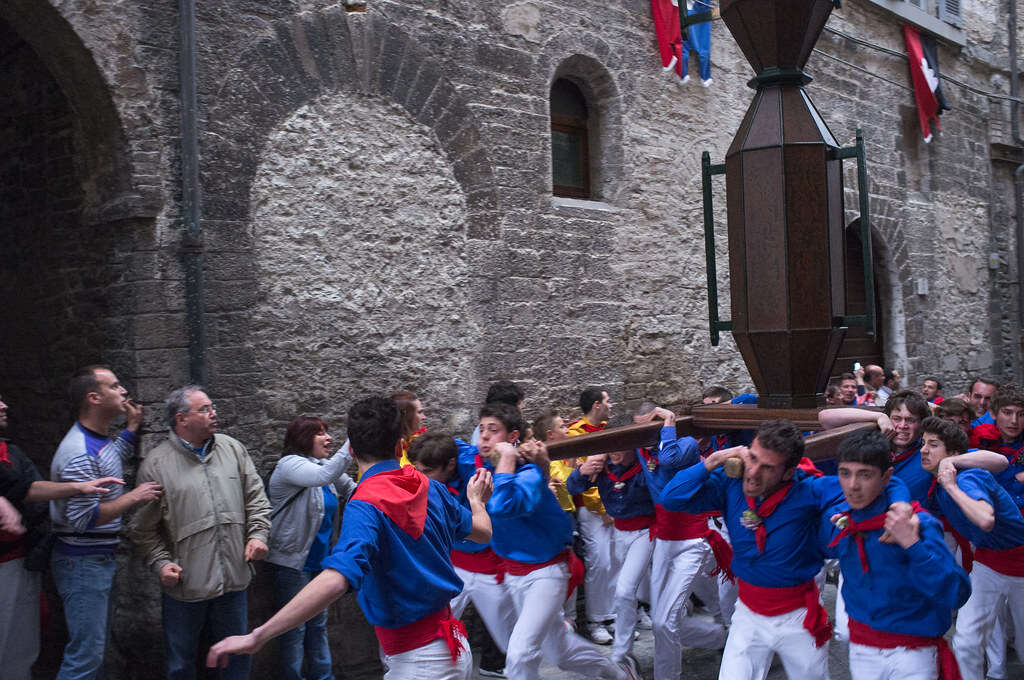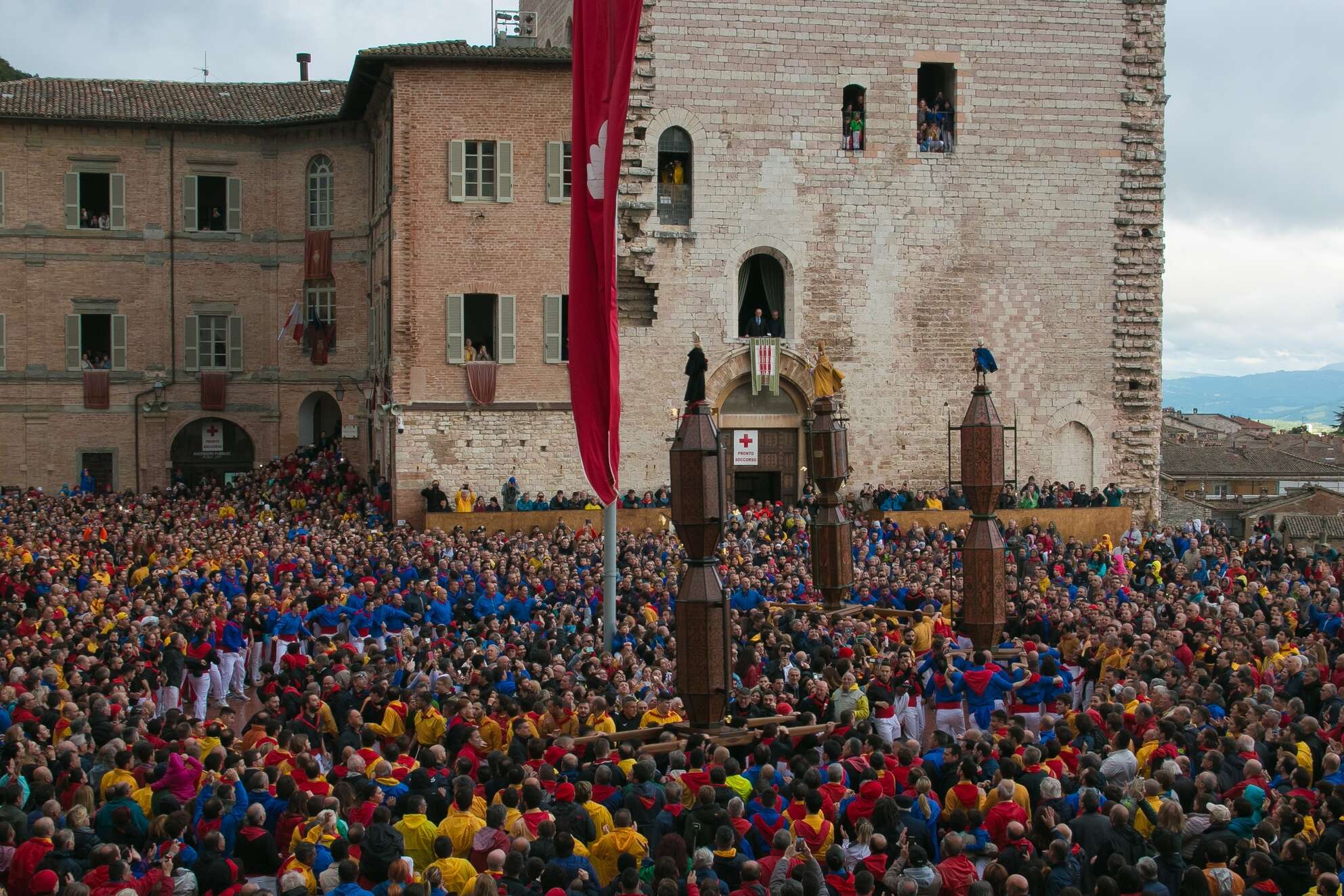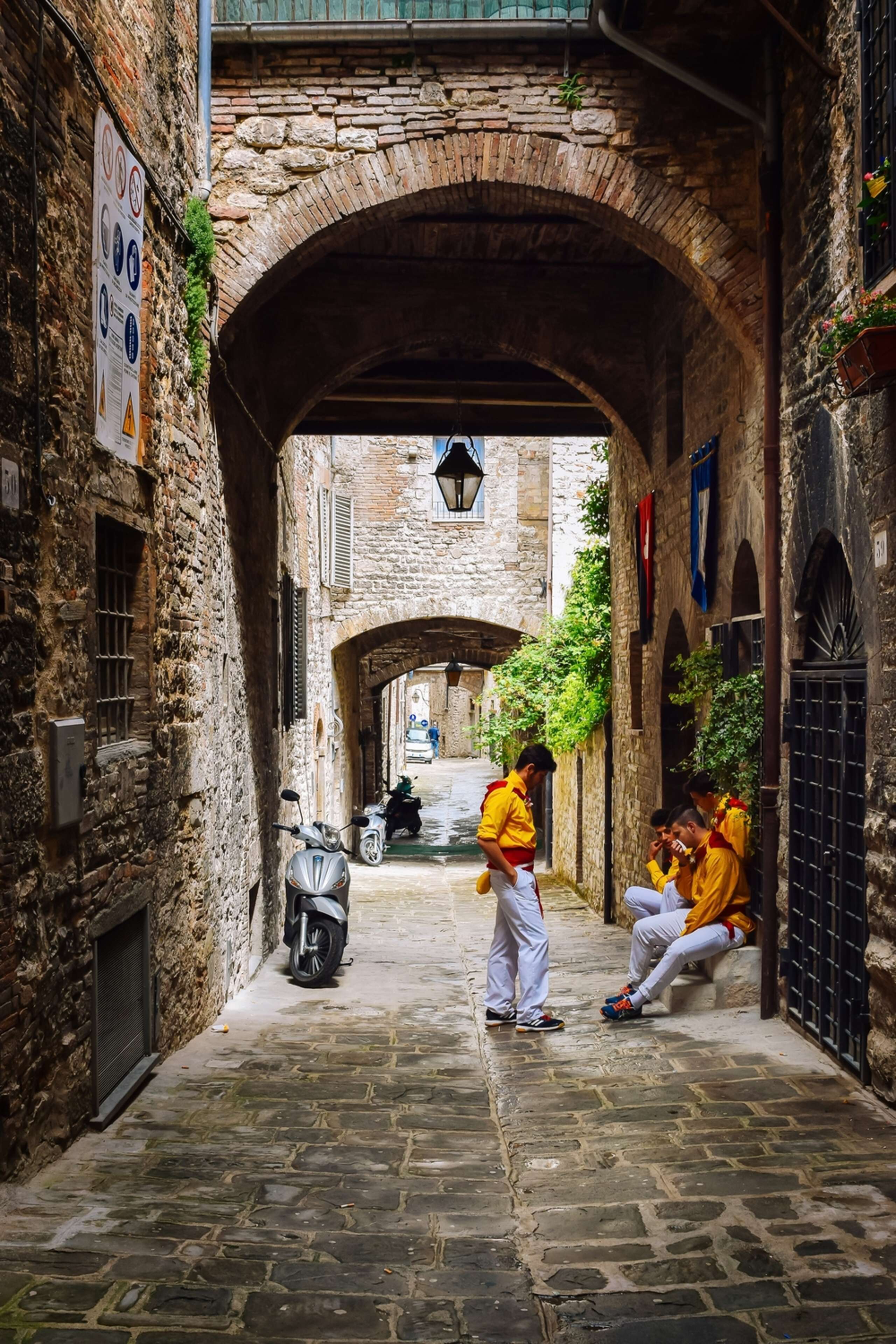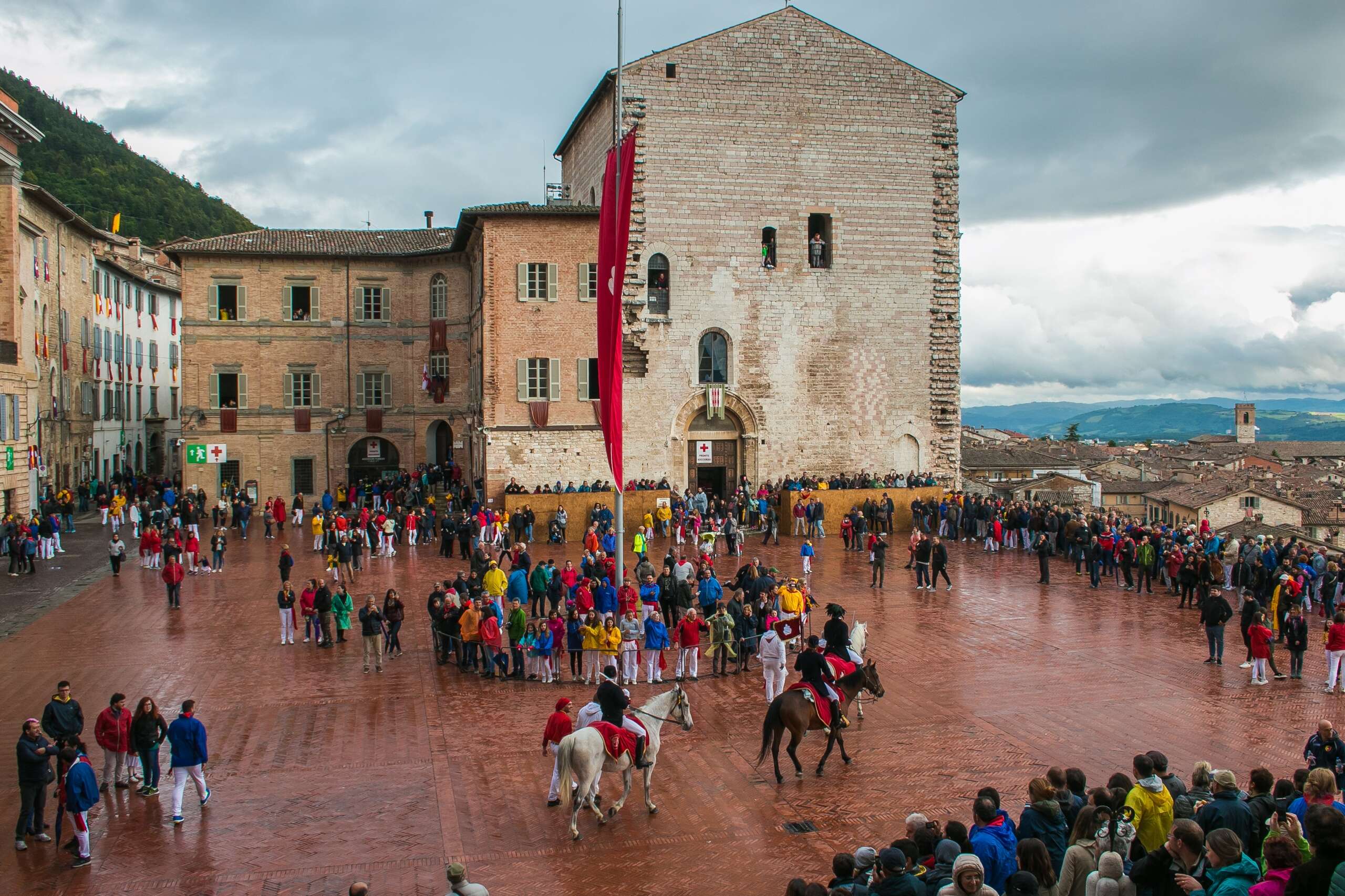Festa dei Ceri
Festa dei Ceri is a traditional and ancient festival held in Gubbio, a city in the central Italian region of Umbria. Originally it was called Corsa dei Ceri (Race of the Pedestals). The event is one of the most noteworthy religious festivities in Italy and attracts many tourists from all over the world.
The origins
The race is a celebration of Saint Ubaldo and its origins date back to the 12th century when he became Bishop of Gubbio. The festival is dedicated to him and is held annually on May 15. Race days consist of processions, fireworks and other festivities.
The process
The race starts at 10:00 a.m. and finishes in the evening with a fireworks display, after the ascent of the Ceri and their blessing by the bishop. Each team consists of 8 people, carrying a wooden platform which has 6 sticks forming a pillar. They weigh approximately 40 kilos (88 pounds) each. They are dedicated to three saints: Saint Ubaldo, Saint Giorgio and Saint Antonio. The aim of the race is to climb the so-called "Corno della Caccia" (Horn of the Hunt), a steep mountain slope in Gubbio, in order to attach the pedestal as close as possible to the top.
The route is around 7km long with many stops where people offer the participants food and drinks, especially wine. They have to stop at certain points for rituals such as kissing their saint's statue or touching objects that they believe will give them strength (like tree trunks).
The dress-code
The protagonists of the festival are the ceraioli (runners) with their white trousers in cotton canvas, the red sash tied at the waist like a belt, a red scarf on their shoulders and a different colored shirt according to the team of belonging (yellow for St. Ubaldo, blue for San Giorgio and black for St. Anthony). For Gubbio's people, the festival is a deep source of pride. Membership in one of these teams is now a family tradition, handed down from father to son.












